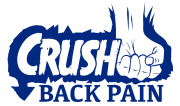Herniated Disc Causes: How do lumbar discs herniate?
Usually a herniated lumbar disc is the result of cumulative microtrauma over time. Repetitive movement patterns and sustained positions weaken the posterior annulus fibrosus (outside of the disc). Eventually the nucleus pulposus (inside of the disc) pushes out against the weakened annulus. This is a disc herniation.
Repetitive, cyclical lumbar flexion and sustained flexion postures place stress and strain on the posterior annulus fibrosus. Repetitive flexion loading has consistently been shown to result in disc herniation in laboratory settings.
The actual herniation usually occurs during a simple movement.
Like bending down to tie a shoe. Or picking something up off the ground. Or getting out of a car. Movements we do every day, multiple times. Disc herniations don’t occur during these movements most of the time because the outer part of the disc hasn’t become weak enough to herniate.
Discs can also herniate as a result of more strenuous activity. Like moving a couch, a heavy deadlift, etc. Falls and car accidents can cause disc herniations. Most of the time though it’s due to repetitive, cumulative microtrauma.
Following a lumbar disc herniation faulty movement patterns and sustained positions are usually not corrected.
This makes it difficult for herniated discs to heal and become asymptomatic.
Determine what movements and sustained positions you are in daily that flex your lumbar spine. Then modify those movement patterns and positions by keeping your lumbar spine neutral and moving through your hips.
Simply keeping your lumbar spine in a neutral position during repetitive movements and sustained positions promotes disc health and healing.
The key is to keep the lower back stable while moving through the hips.
For more videos that show you how to beat back pain subscribe to the Crush Back Pain channel


